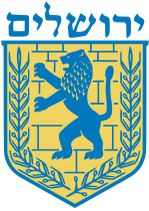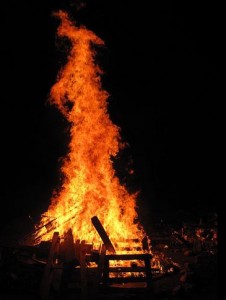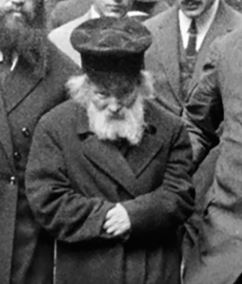In this week’s parasha, Vayechi, we read how Jacob gives a final blessing to his children before his passing. In concluding Dan’s blessing, Jacob says that he is eagerly awaiting God’s salvation, liyeshuatkha kiviti Hashem (Genesis 49:18). What is this referring to? We would think that the salvation will come through Judah, progenitor of David and Mashiach, not through Dan! Indeed, when Jacob blesses Judah (49:10), he says that the royal scepter will remain in his hands all the way until the coming of Shiloh, traditionally interpreted as a name for Mashiach.
On Dan’s blessing, Rashi comments that Jacob foresaw the rise of Samson—from the tribe of Dan—and was praying that Samson would be successful. In fact, as we’ve discussed before, Samson was the potential Mashiach of his generation. (This is first brought down in the Midrash, Beresheet Rabbah 98:14.) Upon closer examination, there is actually a profound connection between the tribes of Judah and Dan.
Our Sages taught that Judah was the most illustrious of the tribes, while Dan was the lowliest. In the Wilderness, the tribe of Judah led the way, while Dan was at the back of the camp. Dan was tasked with being the “lost and found”, and picking up all the things left behind by the other tribes ahead of them. This brought them tremendous merit. On a mystical level, Dan’s role is really symbolic of our mission in “finding” and restoring the lost sparks of Creation to rectify the cosmos. Although people saw Judah as the greatest and Dan as the lowliest, God saw them both as equal, and declared that He will bring representatives from the two together to build His house (Shemot Rabbah 40:4).
As such, God chose Betzalel from the tribe of Judah, and Oholiav from the tribe of Dan to build the Mishkan. The same happened with the Temple in Jerusalem, built by King Solomon from the tribe of Judah, by using resources and labour from King Hiram, whose mother was from the tribe of Dan! (Midrash Tanchuma, Ki Tisa 13) And finally, in the same vein, Mashiach will come from the tribe of Judah paternally, but from the tribe of Dan through his maternal line. (Interestingly, it is possible that King David himself had this lineage, since some hold that his mother, Nitzevet bat Ada’el, was from the tribe of Dan, too.) The root of Yehudah is lehodot, to “thank” and be “grateful”, which is partly an aspect of Chessed, the right pole of “kindness”. The root of Dan is din, “judgement”, representing Gevurah, the left side of “severity”. It is fitting that we need both aspects, right and left, in balance to bring about rectification in the universe. Mashiach is an embodiment of that balance.

Jerusalem’s Coat of Arms
Another Midrash ties this to the reason why both Judah and Dan are described in the Torah as gur aryeh, a “lion cub”, the lion being the symbol of David and of Jerusalem. In Jacob’s finally blessing in this week’s parasha, it is Judah who is called gur aryeh, but in Moses’ final blessing (Deuteronomy 33), it is Dan who is the gur aryeh. The Midrash concludes that Mashiach will come from these two tribes, “his father from Judah and his mother from Dan” (Yalkut Shimoni I, 160). There is also an allusion to it in last week’s parasha, where we read the names of the 70 members of Jacob’s family that came down to Egypt. The only progeny of Dan is Chushim (חשים), an exact anagram of “Mashiach” (משיח)! According to a well-known tradition, it was Chushim who finally put an end to Esau, and so too will Mashiach put an end to the oppression of Edom.
While Dan is called a “lion” by Moses, in this week’s parasha he is called a “snake” by Jacob. This is because the lion was the symbol of the Davidic dynasty, but more specifically, the symbol of Mashiach himself is a snake (as explored in depth here). The famous gematria of “snake” (נחש) is equal to “Mashiach” (משיח), both being 358. This really goes all the way back to Eden, where the Serpent caused man’s downfall, and so it will be the “serpentine” Mashiach who reverses that event. In Kabbalistic sources, this is the meaning of Isaiah’s description of the great final battle between the nachash bariach and the nachash ‘akalaton, the “straight serpent” and the “twisted serpent” (Isaiah 27:1). The former is Mashiach, and the latter is the embodiment of evil that will be destroyed at the End of Days.
Mashiach’s Complex Lineage
When it comes to the specific lineage of Mashiach, we know that he is a direct descendant of King David, but do we have more exact information about his lineage? The pre-Davidic lineage is somewhat clear. It begins with Abraham, from whom there are 14 generations up to David (alluded to by the value of “David”, דוד, being 14!) The key figures in between are Judah, Peretz, and Boaz. Meanwhile, Abraham’s nephew Lot plays a big role, too. Following the destruction of Sodom and Gomorrah, Lot ended up being seduced by his own daughters—who assumed the whole world was destroyed and they had to repopulate the planet—giving birth to Moab and Ben-Ammi, the progenitors of the Moabite and Ammonite nations. From Moab came forth the princess Ruth, wife of Boaz and great-grandmother of King David. From Ammon came Na’amah, wife of King Solomon and mother of Rehoboam, who continued the Davidic dynasty in its third generation.
While we would assume that Mashiach is a direct descendant of David through his son Solomon, there is actually another opinion. The Zohar (III, 173b), for instance, notes that Mashiach might actually come not from Solomon, but from David and Batsheva’s third son, Nathan. (It appears that the Christians wanted to satisfy both rabbinic opinions when providing two different, contradictory genealogies for Jesus in the New Testament: one going through Solomon and one going through Nathan! The irony, of course, is that Christians think Jesus is the literal son of God, so what use is a human lineage anyway?) The dilemma gets more puzzling:
The Zohar says Nathan’s wife was called Heftzibah, and their son was Menachem ben Amiel, an epithet for Mashiach. The problem is that we also know King Hezekiah’s wife was named Heftzibah. Hezekiah was the most righteous king since his forefather David, and is certainly a progenitor in the line of Mashiach. The Talmud (Sanhedrin 98b) states that Hezekiah himself should have been Mashiach, and despite being totally righteous, had one missing quality (for more, see ‘Who is Mashiach?’). The son of Hezekiah and Heftzibah was Menashe, Judah’s longest-serving monarch. Menashe had the potential to be Mashiach, too (and did merit the longest royal reign) but fell to idolatry and wickedness. King Menashe was yet another failed messiah. Some have argued that Menachem ben Amiel and Menashe must be referring to the same person (at least spiritually). Yet Menashe comes from Solomon, and Menachem is supposed to come from Nathan. How do we solve this dilemma?
Pirkei d’Rabbi Eliezer comes in and, at first glance, complicates the problem further. It states (in Ch. 19) that Menachem ben Amiel is a descendant of Joseph, so he is more likely Mashiach ben Yosef, not Mashiach ben David. We might therefore conclude two things: That both Mashiach ben David and Mashiach ben Yosef are actually descendants of King David, the former through Solomon and the latter through Nathan. And, perhaps, just as the former is maternally descended from the tribe of Dan, the latter is maternally descended from the tribe of Joseph. (Maybe Heftzibah the wife of Nathan was a descendant of Joseph?)
The reality is that a person can be a direct descendant of multiple figures, especially after so many generations and so many marriages in between. Today, all Jews are Yehudim, and by default “Judeans”—even Kohanim and Levi’im are Yehudim! So, there is no reason why Mashiach ben Yosef cannot be a descendant both of Joseph and of David. He would undoubtedly be a Yehudi after all! Intriguingly, even David is called an Efrati, apparently with Ephraimite lineage in his past (see I Samuel 17:12, which begins וְדָוִד בֶּן־אִישׁ אֶפְרָתִי).
As it stands today, all the tribes have long thoroughly intermixed, and the exact lineage is no longer of significance (nor is it even traceable). What’s important are the key qualities that Mashiach must possess, and the ability for inspiring leadership and for dignified kingship, as well as, most significantly, to accomplish the tasks set out in the Tanakh (and as codified by the Rambam in Hilkhot Melakhim).
When Mashiach does come, he will merit to wield the serpentine Staff of Moses—that special tool fashioned by God at the twilight of the Sixth Day of Creation (Avot 5:6). And who will provide him with that staff? None other than the returning Heftzibah, the Mevaseret Tzion, and a fierce warrior in her own right who has the power to “slay kings”, as described in the little-known ancient Sefer Zerubavel:
“…the staff of Aaron and Moses and David king of Israel, the staff which flowered in the Tent of Meeting, and brought forth blossoms and produced almonds. And Eliyahu son of Elazar hid it in Raqat [in the territory of Naftali], which is Tiberias, and there was hidden Mashiach ben Ephraim.”
And Zerubavel ben She’altiel said to Michael [the angel]: “If it please my Lord, when will come the light of Israel? And what will be after all this?” And he said to me: “Mashiach ben Yosef will come five years after Heftzibah, and will gather all Israel as one man, and then the king of Persia will come up against Israel and there will be great distress in Israel. And Heftzibah the wife of the prophet Nathan will go out with the staff which the Lord will give her, and the Lord will make a spirit of confusion enter them, and they will slay one another, and there the wicked will die…”
Liyeshuatkha kiviti Hashem!



